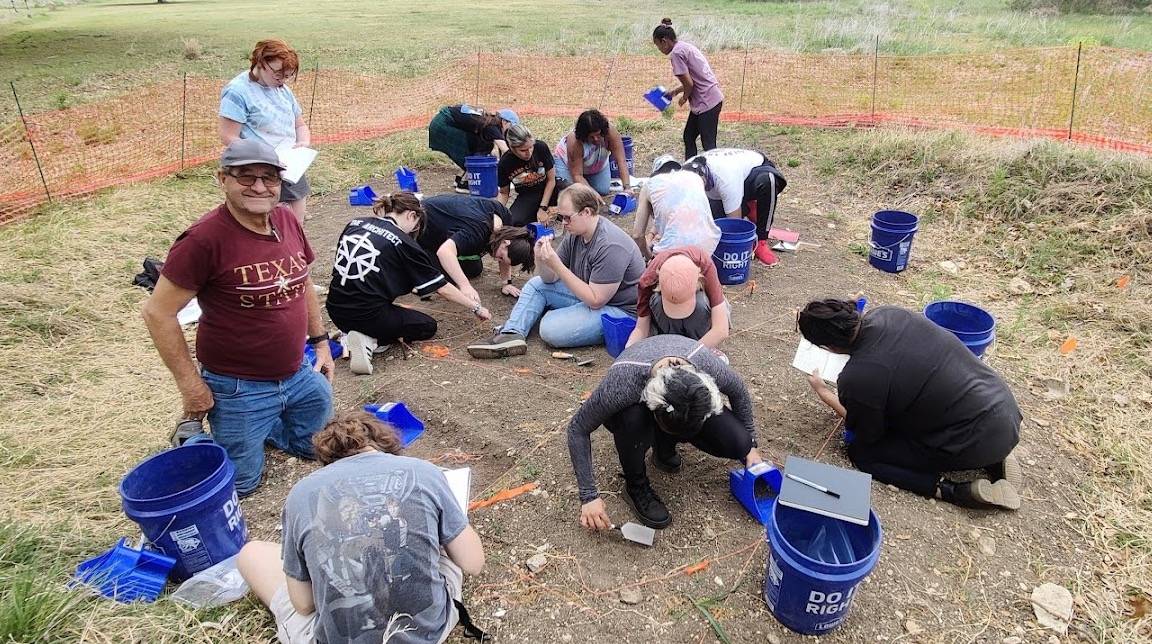Heather Smith
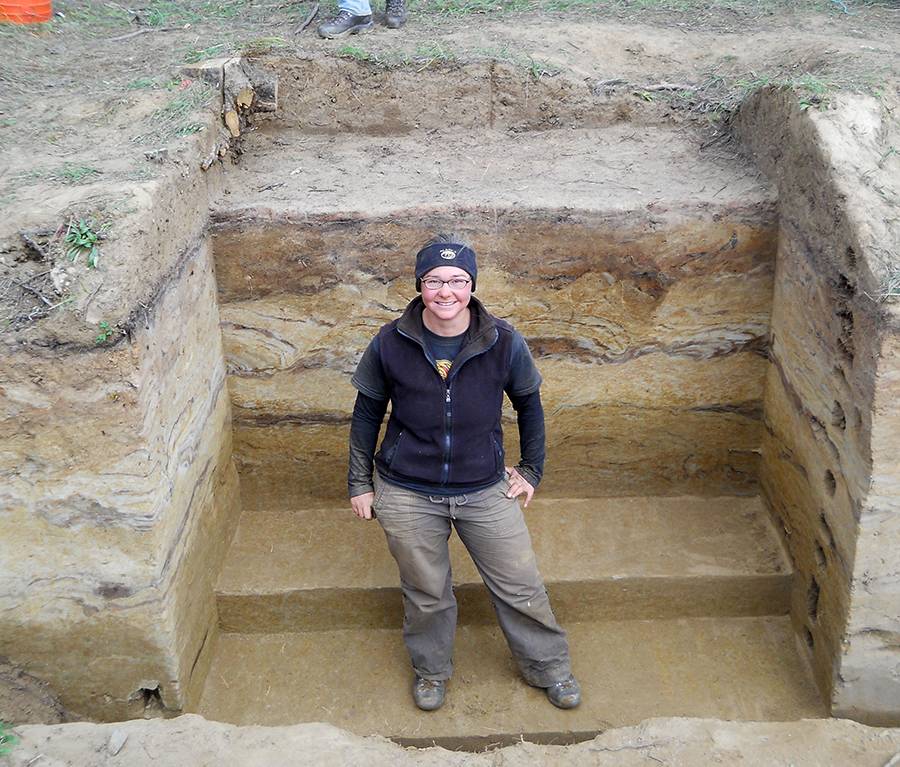 Assistant Professor
Assistant Professor
Office: ELA 241
Email: heather.smith@txstate.edu
Phone: 512.245.7961
Primary Focus:
Archaeology
Research Interests:
Paleoindian Archaeology, Paleolithic Archaeology, North American Archaeology, Texas Archaeology, Arctic Archaeology, Human Dispersals, Lithic Technology, Fluted Projectile Points, 3D Scanning, Geometric Morphometrics, GIS, Cultural Transmission, Evolutionary Archaeology, Human Behavioral Ecology.
*I am currently accepting M.A. and Ph.D. students to start in the Fall semesters. Applications for the PhD program are due December 1 and the MA program January 15. Interested students should email me to discuss research interests and potential projects.
I received my Ph.D. in Anthropology with an emphasis in Archaeology from Texas A&M University in 2015. My focal research interests concern human dispersals into and throughout the American continents at the end of the last Ice Age and changes in lithic technological adaptations in response to environmental change. To address these issues, I bring together lithic analysis, geoarchaeological, and paleoenvironmental studies and use traditional and digital methods of analyses including 2D and 3D geometric morphometrics, cladistics, and GIS. I use large lithic datasets as proxies to examine the movement of human groups into and throughout the American continents, but also specialize regionally in the American Arctic, Texas, and the Great Plains that connect the two. My research interests have also begun to spill over into the Southwest and Southeast with recent field projects in New Mexico and collaborative research into Dalton fluted point technology.
My career as an archaeologist, however, began in 2005 as a student in Texas where I landed an internship developing web content for TexasBeyondHistory.net, the virtual museum of Texas archaeology. More than a few years later, I now serve as an Associate Editor for Texas Beyond History and continue to develop content, but also involve students in our endeavor to bring Texas archaeology to the public both in and out of the classroom.
Current Research
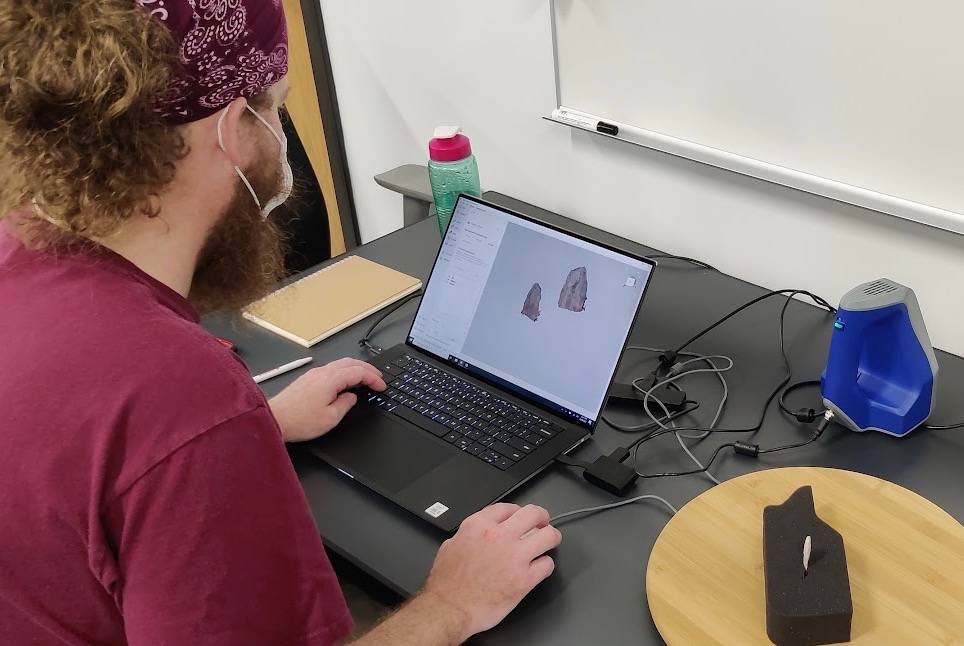
My current collections-based research includes geometric morphometric analyses of Clovis and non-Clovis fluted-point assemblages from across North America, such as the Northern Fluted Complex and Dalton, to address how fluted-point technology was culturally transmitted from the mid-continent to the Arctic and Southeast at the end of the last Ice Age. I am currently working with both 2D and 3D fluted-point datasets and work with students to continue expanding the sample. My goal is to provide students with hands-on training in 3D scanning, 2D imaging, and digital analyses using a variety of methods such as geometric morphometrics and cladistics.
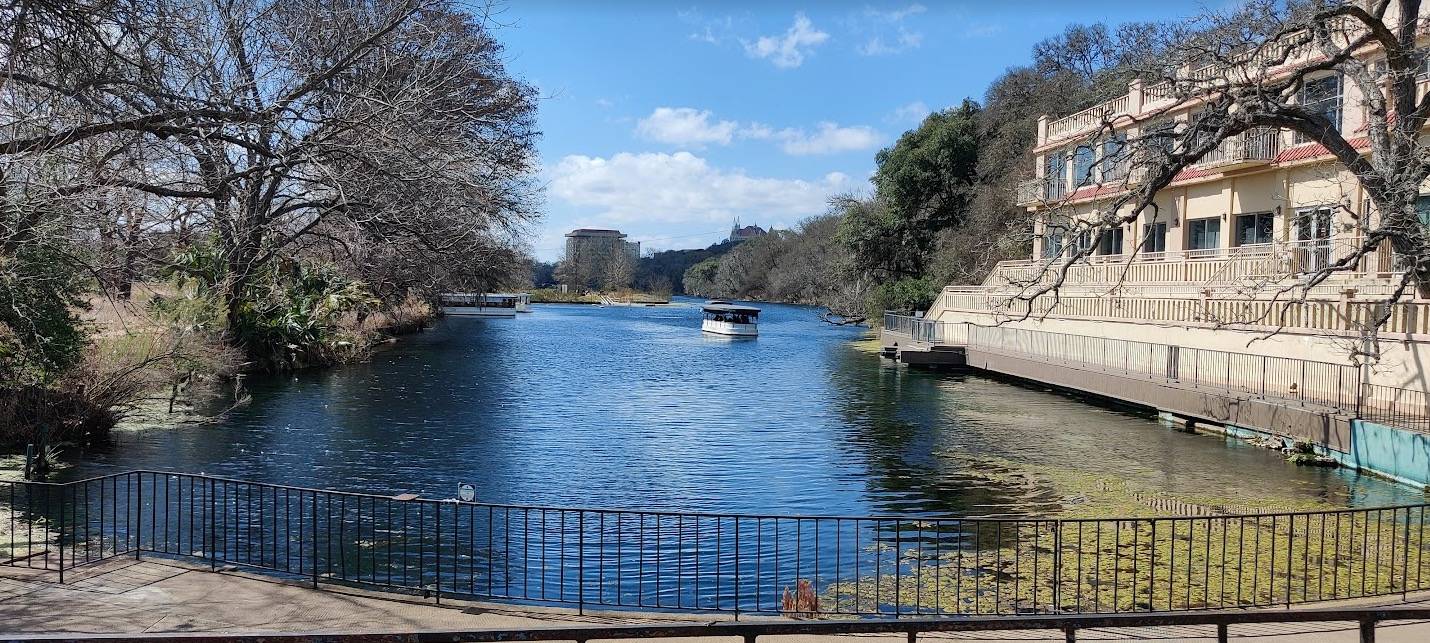 In the field, I am currently revisiting the Spring Lake site, a multi-component site that preserves a sequence of archaeological deposits dating from the late Pleistocene to the Historic era. Previous excavations have produced lithic, faunal, and historic collections that are curated at Texas State University’s Center for Archaeological Studies. Many of these assemblages have yet to be analyzed and are available to serve as materials for M.A. and Ph.D. projects. New field work consisting of geoarchaeological coring, remote sensing, and paleoenvironmental investigations is currently underway and producing data available for student projects as well. Our new state-of-the-art archaeology laboratory just opened in January 2022 and provides space and tools for students to learn and conduct their own research, as well as collaborate on the ongoing research projects of the archaeology faculty.
In the field, I am currently revisiting the Spring Lake site, a multi-component site that preserves a sequence of archaeological deposits dating from the late Pleistocene to the Historic era. Previous excavations have produced lithic, faunal, and historic collections that are curated at Texas State University’s Center for Archaeological Studies. Many of these assemblages have yet to be analyzed and are available to serve as materials for M.A. and Ph.D. projects. New field work consisting of geoarchaeological coring, remote sensing, and paleoenvironmental investigations is currently underway and producing data available for student projects as well. Our new state-of-the-art archaeology laboratory just opened in January 2022 and provides space and tools for students to learn and conduct their own research, as well as collaborate on the ongoing research projects of the archaeology faculty.
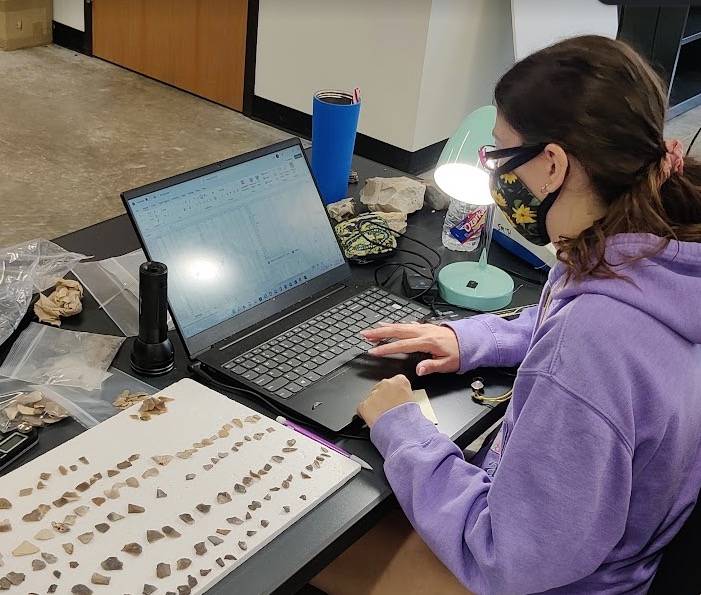

Current and Past Chaired MA Theses & PhD Dissertations
| Student | Thesis/Dissertation Title | Student University |
|---|---|---|
| Amy Reid, Ph.D. 2021-in progress | “Spring-fed Origins: The Archaeology and Ethnohistory of Two Spring-Based Sites in Central Texas” | Texas State Univ. |
| Trey Lasater, M.A. 2022-in progress | “Testing Approaches to Remote Stratigraphic Analyses at the Spring Lake Site, TX” | Texas State Univ. |
| Elliott Jones, M.A. 2021-in progress | “Clovis on the Brazos: A Morphological and Technological Comparison of the Clovis Tools at Blackwater Draw and the Gault site” | Texas State Univ. |
| Sabrina Boyd, M.A. 2021-2023 | “The Organization of Lithic Technology at Spring Lake, TX, 41HY160” | Texas State Univ. |
| Joseph McConnell, M.A. 2018-2020 | “Evaluation of the Charlie Parks “Folsom” Collection Using a Range of Variation in Southern High Plains Folsom Points” | Eastern NM Univ. |
| Michael Jeu, M.A. 2018-2020 | “An Experimental Spatial Analysis of Lithic Discard Patterns: Comparing Modern, Ethnographic, and Prehistoric Behaviors” | Eastern NM Univ. |
| Coyle Singletary, M.A. 2017-2019 | “Searching for Provenience: Using Typology to Evaluate Cultural Associations of Axes, Hoes, and Mauls from the Southwest” | Eastern NM Univ. |
| Nathan Shelley, M.A. 2016-2019 | “Assessing Archaeological Applications of Curated Sediment Samples: A Case Study from Mesa Portales, New Mexico” | Eastern NM Univ. |
Select Publications
Smith, H., and A. Reid (2022) Evaluating the Fluted Points from Spring Lake, Texas: A Geometric Morphometric Shape Analysis of Clovis Affinity. PaleoAmerica, In Press.
Smallwood, A., T. Jennings, H. Smith, C. Pevny, M. Waters, T. Loebel, J. Lambert, J. Ray, and D. Stephens (2022) Using 3D Models to Understand the Changing Role of Fluting in Paleoindian Point Technology from Clovis to Dalton. American Antiquity 1-23 DOI:10.1017/aaq.2022.19.
Smith, H., T. Jennings, and A. Smallwood (2021) Do Early Paleoindian Point Blades Carry Culturally Significant Shape Information? Modules versus Complete Points using Geometric Morphometrics. Journal of Archaeological Science: Reports 40(B) DOI: 10.1016/j.jasrep.2021.103245.
Smith, H., S. Kuzminsky, and A. Linderholm (2020) Discerning Dispersals along the Pacific and Interior Corridors: Contributions of Geometric Morphometrics to the Peopling of the Americas . PaleoAmerica 6(1):109–130. DOI: 10.1080/20555563.2019.1696149.
Smith, H., and J. Tune (2019) Variation in Fluted-point Technology: Investigations across Space and Time. PaleoAmerica 5(2):105–108.
Smith, H., and T. Goebel (2018) The Origins and Spread of Fluted-point Technology in the Canadian 'Ice-free Corridor' and Eastern Beringia. Proceedings of the National Academy of Sciences. DOI 10.1073/pnas.1800312115.
Smith, H. and T. J. DeWitt (2017) The Northern Fluted Point Complex: Technological and Morphological Evidence of Adaptation and Risk in the Late Pleistocene Arctic. Archaeological and Anthropological Sciences, DOI 10.1007/s12520-016-0335-y.
Teten’kin, A., Smith, H., and A. Henry (2016) Archaeological Evidence f or Construction Activities at the Kovrizhka Site, Siberia, during the Pleistocene -Holocene Transition: Structures, Lithics, and Charcoal Analyses. PaleoAmerica 2(4):343–361.
Smith, H., A. M. Smallwood, and T. J. DeWitt (2015) A Geometric Morphometric Exploration of Clovis Fluted-Point Shape Variability. In Clovis: On the Edge of a New Understanding, edited by Ashley M. Smallwood and Thomas Jennings, pp.161-180. Texas A&M University Press, College Station.
Smith, H., J. Rasic, and T. Goebel (2013) Biface Traditions of Northern Alaska and Their Role in the Peopling of the Americas. In Paleoamerican Odyssey, edited by Kelly E. Graf, Caroline V. Ketron, and Michael R. Waters, pp.105-123. Texas A&M University Press, College Station.
Course Taught at Texas State University
Undergraduate Courses:
- ANTH 4339: Archaeological Field Methods
- ANTH 3361: Archaeological Theory
- ANTH 3318: Texas Archaeology
- ANTH 3308: CRM Archaeology
Graduate Courses:
- ANTH 5313: Archaeology Seminar
- ANTH 5318: Texas Archaeology
